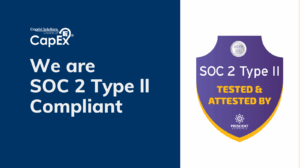In business, interpersonal relationships, and every other facet of existence, there is always room to improve. We can dig deeper – to make our circumstances even better.
We always hear stories of professional athletes who stay behind to practice when everyone else goes home. Or the smart student who studies when the rest of the kids go out to play ball. Working harder and learning more will always yield more results. One thing that will help us improve in business is creating a more efficient and streamlined way of doing activities.
Let us look at several ways to improve your current CapEx processes.
1) Capital is priority #1
Your capital investment will make an important impact on the value of your business. Capital investment has the power to drive growth and increase returns. That is why top-performers use a clear capital allocation strategy that helps build high-performing portfolios. How do they pull it off, you ask? Their strategic imperatives and target capital portfolio are intertwined, meaning they have poised their targets to grow and improve productivity to sustain capital expenditures.
2) Be clear about your intentions
Organizations usually categorize their potential investments into one of two groups: qualitative or quantitative. Qualitative investments generally include strategic projects – or those addressing regulatory requirements or new mandates. A quantitative investment has a defined financial goal.
The best way to prevent mandated projects from falling between the cracks is for management to have the ability to assess portfolios against each other and bring them under prioritization at face value.
3) Focus on the little things
There is a time when painting with a broad-brush works. But not when it comes to your investment portfolios. Your project proposals must always have a thorough rationale, a clear set of alternatives, and a calculated assessment of the expected return. It would help if you also focused on timeframe and risk. Also, be prepared to update and refine your proposals as they evolve, which they certainly will.
A great model or system for identifying each project’s best sources helps to mitigate any uncertainties while eliminating any cognitive bias and creating a solid foundation of an optimized portfolio. A thoroughly scrubbed and optimized process will offer you ten to thirty percent reductions in spending for low-priority projects.
4) It is all about the Return on Investment (ROI)
Your company must track ROI through the project’s life cycle, especially when planning a portfolio or an annual budget. Additionally, there is a need to review all approval requests.
The onset budgeting process will help identify the more critical projects; thorough, formal reviews allow you to revisit other priorities and precisely understand where they rank as the story becomes more defined. Having an accurate ROI is a must-have when conducting post-completion reviews so that you may have a better understanding of how each investment performed versus your expectations.
5) Streamline your processes with CapEx Automation
Capex approvers ask three critical questions in the process of request evaluation: Is this proposal complete, and, if so: has it met the minimum criteria? Are the funds available? If not, when will we have them? How is this project more important than another?
Assessing this process manually will contribute to wasted time and valuable information. You will inevitably only end up with a portion of the complete picture, which can delay other projects and negatively affect your bottom line. To invest in the most critical projects and aim to hit targets, management must assess each proposal quickly, given the capital position alternatively to the budget and other portfolios.
6) Improve your company culture
Mistakes are great teachers if we understand the lesson, and the best way to ensure the value of capital investment is maximized is to identify past mistakes and correct them in the future.
If investment objectives are supported by the top executives and down the food chain, management will have their marching orders and understand what they need to do to succeed. For example, if stakeholders were to adopt a mechanism that flags projects that go over schedule or budget, this will create a review process for every project and track every project’s ROI.
By deploying this relatively simple approach, a company can expect to reduce its CapEx budget by a fair amount without upending its process.
Analyst Bottom-Line
Top-performing executives know that effective and efficient capital investment management results in better cash flow, more growth, and competitive advantage. However, businesses are still struggling to manage the spending of various portfolios, and as a result, lose out on growth and profitability.
By improving business processes and Finance functions, it becomes possible to enhance overall CapEx performance by applying the practices covered above and implementing an automated capital portfolio management process.




